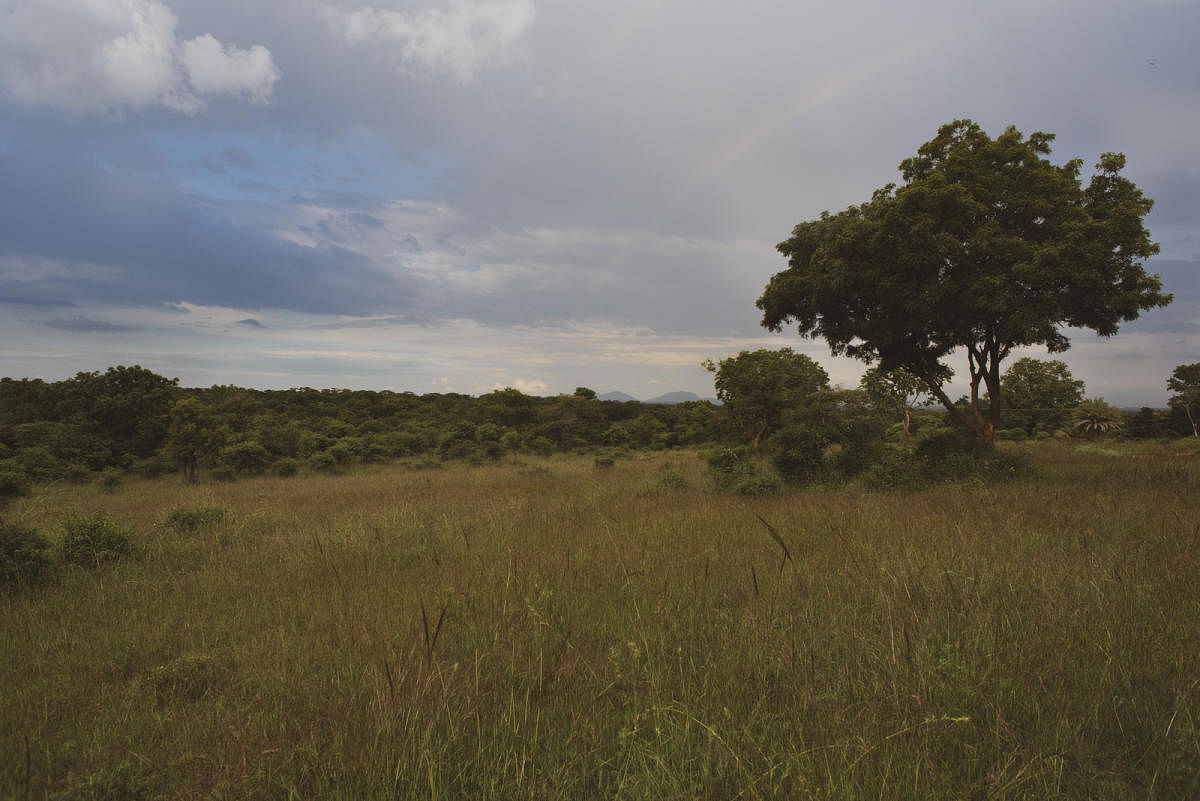
Tropical savannas, replete with large expanses of grasslands, are often misclassified as wastelands. According to a recent study, these ecosystems are home to several plants not found anywhere else on earth.
Although India accounts for about 18% of the world’s population, it constitutes only 2% of land area. This has resulted in the categorisation of available land as available for productive purposes or otherwise. The Department of Land Resources, under the Union Ministry of Rural Development, estimates that approximately 68.35 million hectares of land in the country is made of ‘wastelands’.
Interestingly, these landscapes considered as Indian savannas are also part of Tropical Grassy Biomes.
Out of this, 50% of the lands is in non-forested areas and when ‘treated’ appropriately they can be made ‘productive’. These degraded, non-forested areas are typically landscapes with grasslands that have a combination of open scrub with rocky outcrop or open canopy ecosystems. Because they remain uncultivated, they are termed ‘unproductive’ and called ‘wastelands’.
Ecologists are now disputing this notion of ‘wastelands’. A new study published recently in Biotropica highlights the importance of Indian savannas and demystifies certain myths surrounding them.
The popular imagination, even among ecologists, has been that endemic species are primarily found in biodiversity hotspots like the forest biomes of the Western Ghats or the Himalayas.
However, this study argues that the Indian savannas nurture endemic species. A team of researchers including A Nerlekar, A Chorghe, J Dalavi, R Kullayiswamy, S Karuppusamy, V Kamath, R Pokar, R Ganesan, M Sardesai, and S Kambale, from Karnataka, Tamil Nadu, Maharashtra, Gujarat and Rajasthan, contributed to this study.
To ascertain this, the researchers have reviewed an exhaustive list of floristic and taxonomic sources spanning spatial scales from the national to the local level until September 2020.
To analyse them, they compiled a list of species described in these ecosystems based on discovery date; elevation and precipitation; latitude and longitude of the type locality; functional type classification; plant height; range size; and flower and inflorescence length. The researchers also looked into the discovery patterns in these landscapes both over time and space.
This study reveals at least 206 endemic plants in this region, represented by 47 families, with 201 were angiosperms and five gymnosperms. The study points out that of all the endemic plants recorded, 17 are in the IUCN Red List of threatened species, and most newly discovered species (more than 75 new species have been described since 2010) await a formal assessment.
So clearly, the Indian savannas have been misrepresented for a long time, remarks Ashish Nerlekar, the lead author of this study. Reasoning why we may have overlooked them, Ashish Nerlekar says, “First is due to the colonial legacy, we still think that these savannas are degraded forests that house negligible endemic species. Second is the lack of appreciation that these are ancient ecosystems worthy of conservation. While the forests have received considerable attention, savannas are barely recognised today as distinct ecosystems. Third, biodiversity studies in the forest biomes are disproportionately high, assuming there's nothing much of value in the savannas.”
More to discover
An analysis of the discovery patterns of endemic plants revealed that the rate of discovery is exponential and shows no signs of flattening, indicating a significant proportion of undescribed species. Furthermore, the researchers predict that 633 and 912 species would be described by the 2050s and 2100s, respectively.
Vignesh Kamath, a co-author of the study, says, “Future endemic plant discoveries are likely to be small-statured species in high elevations of the Eastern edge of the Western Ghats and the Eastern Ghats mountain ranges. Based on these findings, more field studies and conservation efforts need to be directed — this could lead to many more new endemic species discoveries.”
Another study by M D Madhusudan, an independent researcher, and Abi Tamim Vanak, Senior Fellow at the Ashoka Trust for Ecology and the Environment, Bengaluru, mapped the distribution and extent of these landscapes, calling them Open Natural Ecosystems (ONEs) using Google Earth Engine. They estimate that savannas occupy over 3,00,000 sq km or 10% of India’s landscape, which also comes close to matching the estimate of 'wastelands' by the Department of Land Resources.
Madhusudan notes that by representing these as ‘degraded’ or ‘waste’ areas, it ends up looking reasonable to target them for climate change mitigation activities such as establishing renewable energy projects such as solar and wind farms or ‘reforestation’ projects for carbon sequestration. “Ironically, such measures pose a further threat to the biodiversity of these landscapes. We are losing such ecosystems at a far greater pace than rainforests,” he remarks.
Further, Vignesh points out that, “As a consequence of mistaken identity, large scale land conversion and tree planting in the wrong places is leading to rapid loss of savannas. We hope that our findings will help recognise the importance of Indian savannas and bring more attention to protecting these biodiverse ecosystems”.
Reconsideration
Madhusudan argues that these ecosystems support millions of pastoral and agro-pastoral communities who graze their livestock in these areas. Therefore, it would be a very narrow and wholly inaccurate way to think of them as wastelands. Ashish points out that this also stems from the colonial forestry legacy that only valued landscapes with trees that provided timber and the rest naturally tree-less landscapes, including grasslands as of low conservation value.
The Department of Land Resources' Integrated Wasteland Development Programme is proving to be counterproductive and threatens the savannas.
Going by the recent studies, it is only prudent to scrap the notion of wastelands and refocus on conserving the Indian savannas. These ecologically-rich areas have been systematically degraded by human intervention.
(The author is with Research Matters)